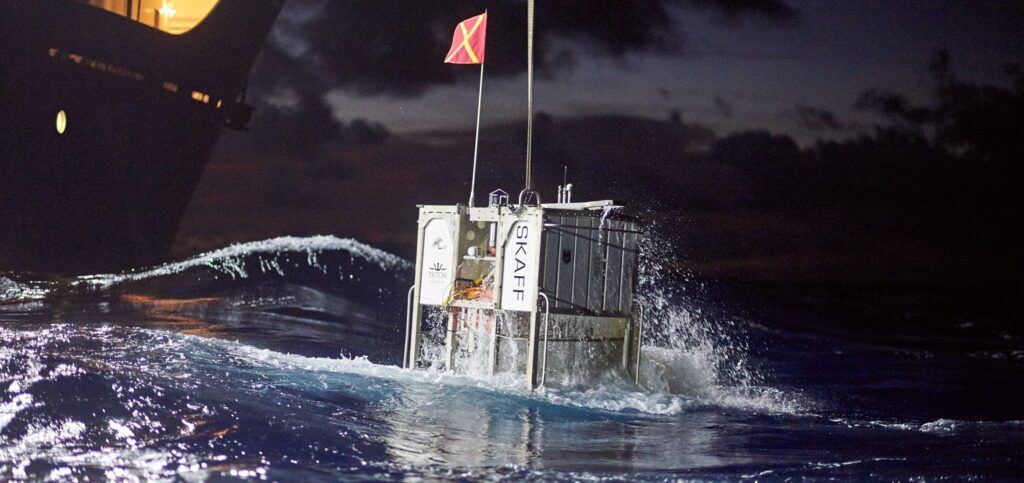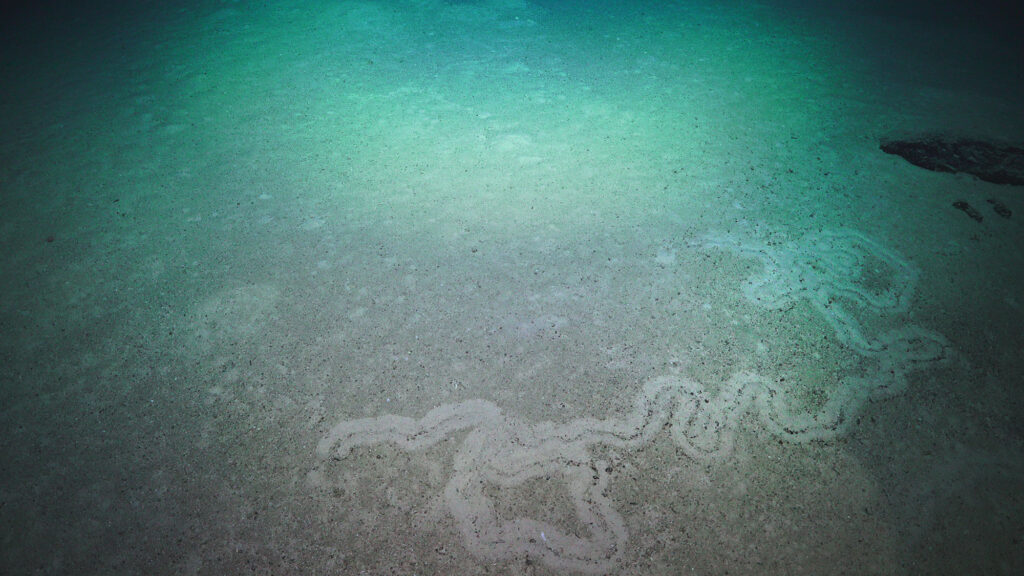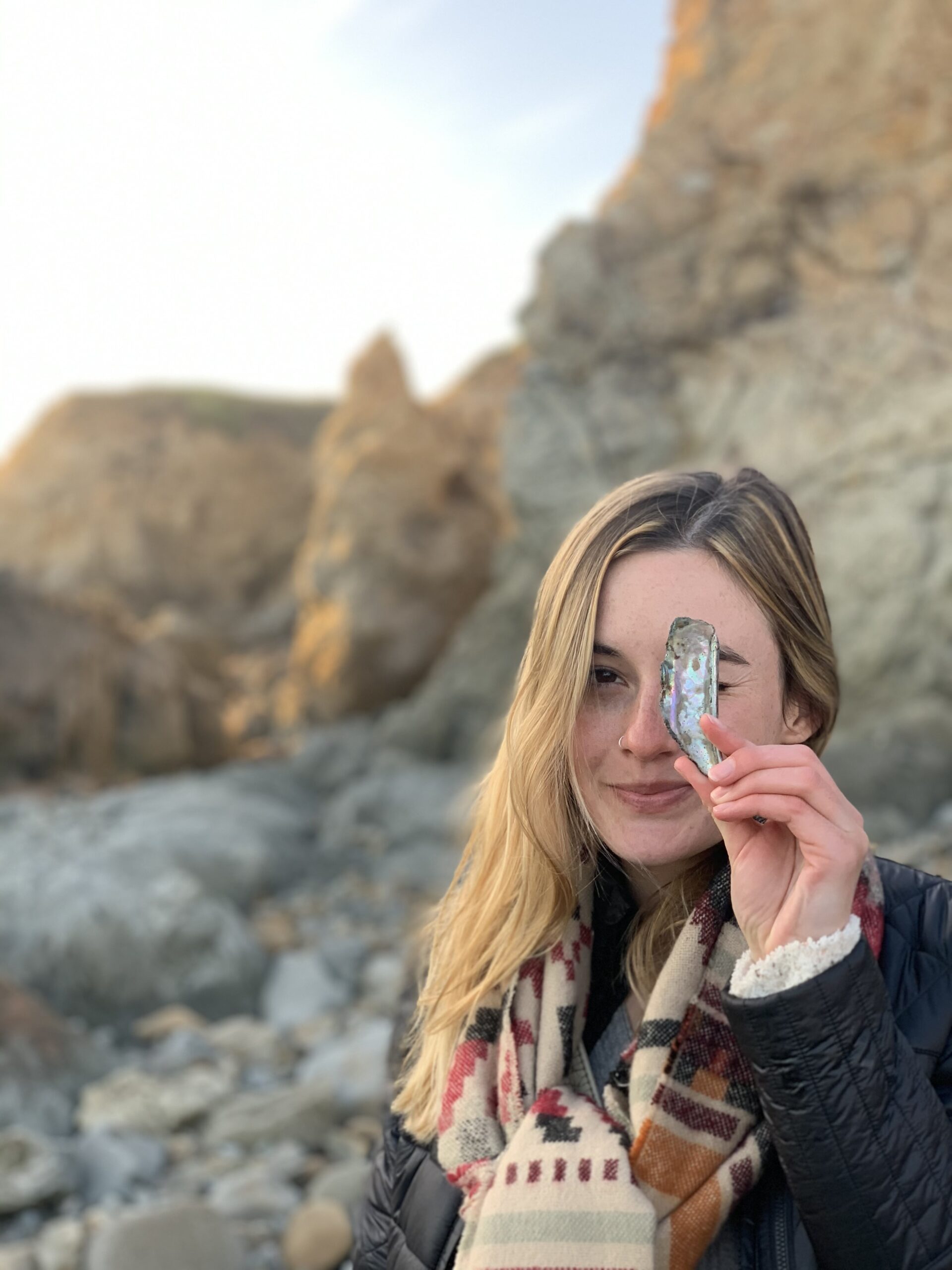 Image: the submersible The Limiting Factor on the surface of the sea. Source: https://oceanographicmagazine.com/news/deepest-ever-submarine-dive/
Image: the submersible The Limiting Factor on the surface of the sea. Source: https://oceanographicmagazine.com/news/deepest-ever-submarine-dive/
Miles below the surface of the sea, a submersible called The Limiting Factor observed what very few human beings have been able to see: the very bottom of the ocean. A recent endeavor called the Five Deeps Expedition had the lofty goal to be the first manned submersible to reach the deepest parts of all five oceans. Apart from being a record breaking feat of human capacity, the expedition’s main purpose was to observe the ecology of environments that are rarely, if ever, explored. The submersible dropped into the deepest points of the Arctic, Atlantic, Indian, Pacific, and Antarctic Ocean and captured visual data of areas virtually unknown – and found something that’s been impacting the precious ecosystem in huge ways.
The deep seafloor, or benthos, appears to the untrained eye mostly a barren, dark, and incomprehensibly vast area. The residents may be difficult to find, and they likely aren’t too fond of being seen by trespassers. However, scientists are able to identify and understand the life and behaviors of deep sea organisms through an amazing phenomena called lebensspuren.

Image: examples of lebensspuren on the seafloor. Source: https://schmidtocean.org/cruise-log-post/lebensspuren-more-than-a-fancy-word/
Lebensspuren, a German term that translates to “life traces,” was first used by paleontologists in 1962 to describe the physical evidence of life that is left behind by another living being. Also known as bioturbation, it is the formation of delicate patterns and structures that get left behind in the soft seafloor sediment by creatures doing all kinds of things on the seafloor. They can be a multitude of mysterious patterns or structures, like long squiggly trails from a traveling organism or a circle of repeated divots from burrowing activity. Because of the stillness of the deep, these markings are left unperturbed for long periods of time, making them excellent artifacts for scientists to better understand deep sea life without needing to interfere or experience something first hand. These lebensspuren are the artifacts of the deep, their intricate and elaborate prints offering a remarkable glimpse into the kinds of organisms that make them. However, it seems the creatures of the deep have been more than aware of our presence on earth than us of theirs.

Image: the tracks observed by the Limiting Factor at full depths on the seafloor. Source: https://www.sciencedirect.com/science/article/pii/S0278434322002205
While scientists on the expedition were hoping to find these enigmatic lebensspuren, what else they found turned out to be more than just benthic life traces. Long, parallel lines of tracks were found on the seafloor as well, stretching on for tens of feet and often cutting through and disrupting the delicate lebensspuren. It was clear to scientists that these were not made by any deep sea creature, and it quickly became clear what the culprit was. The most conspicuous feature they found of the sea floor in every ocean? Litter, specifically plastic bags. In the 90 minutes spent in the Philippine trench alone, researchers saw more plastic bags than they saw deep sea creatures. These long, parallel tracks were found to be the direct result of them scraping along the sediment while they float. Scientists decided to call them “mullsspuren,” an apt name that translates to “garbage traces.” This isn’t the only ocean where plastic is present at full depths; nearly every other observed point in each explored ocean had human waste.

Image: plastic bags found in the bottom of the Philippine Trench (>10,000m.) Source: https://www.sciencedirect.com/science/article/pii/S0278434322002205
There is an increasing amount of evidence for the impact we have on the ocean, and even at full ocean depths, we cannot escape the domination of litter. Neither can the millions of organisms that are directly and indirectly affected by human waste and industrialization. A plastic bag in the ocean, after a certain point, has nowhere else to go but down, where it will drag along the seafloor until it is eventually buried in the sediment for years to come, leaching chemicals into the water and microplastics into food webs. Scientists even found that a single bag covers ground 2 to 12 times faster than a slow moving deep sea cucumber. While the true effects of mullsspuren are only speculative for now, this does provide clear evidence of the damage that plastics are creating in the ocean, and it is a tragedy to see them in the furthest depths of the planet. Humans existence creates change in places we will never see in person. The tiny, incredibly important life that exists on the ocean floor is in a precious balance at depths barely comprehensible and has more of an impact on the planet’s wellbeing than we realize or even know. Breaking up these careful, deliberate paths of life will have more consequences than we realize at the moment, but that doesn’t mean there isn’t hope to still preserve them.

I’m a California native with a lifelong curiosity for all things related to the ocean. I got my bachelors in Marine Biology from the University of California Santa Cruz, and I’m currently pursuing a masters degree in Animal Science at the University of Idaho where my main focus of study is fish nutrition in aquaculture. My favorite subject to study outside of school is the deep sea. I enjoy learning about new mind boggling species, the latest discoveries of the deep, and the history of deep sea pioneers, research and technology. If I’m not studying the mysteries of the ocean, I’m probably roller skating or watching scary movies.
